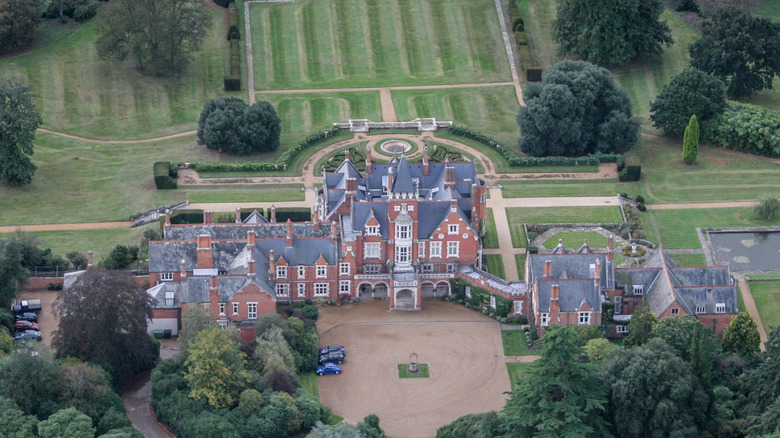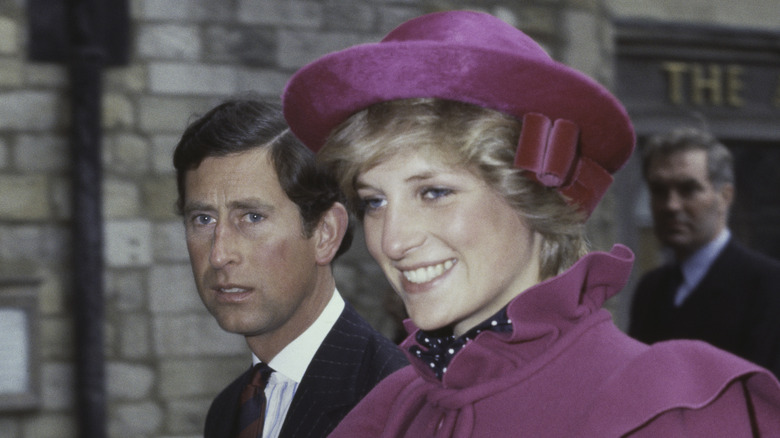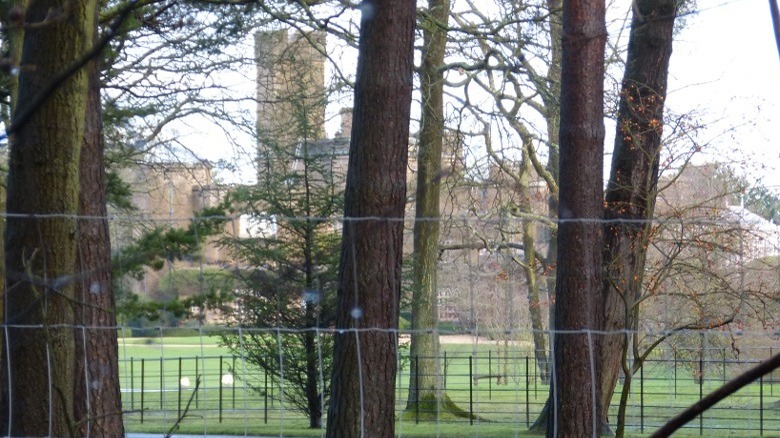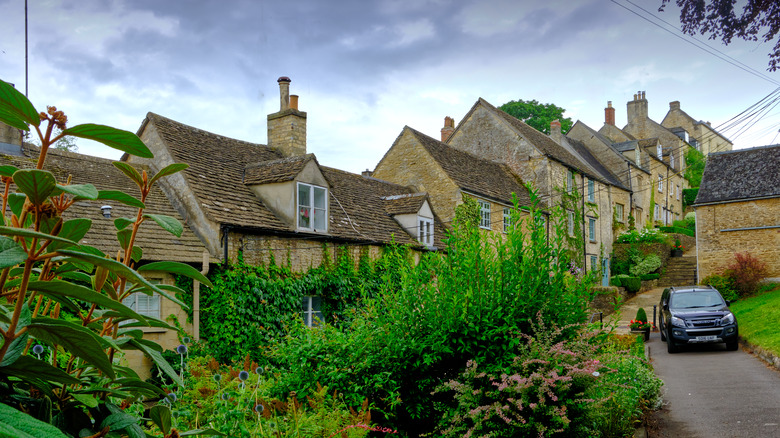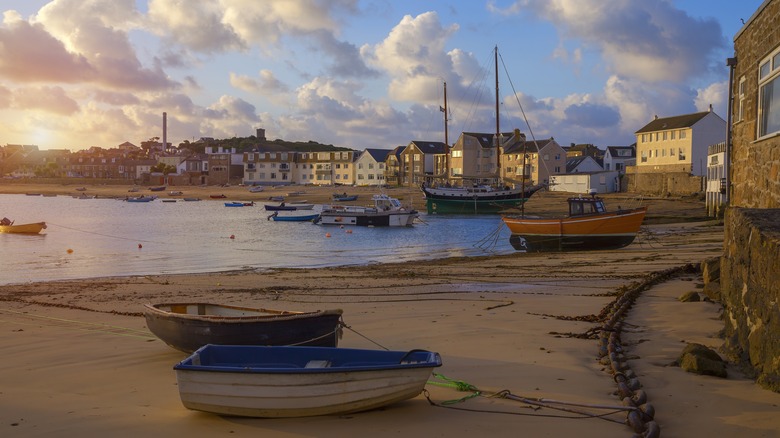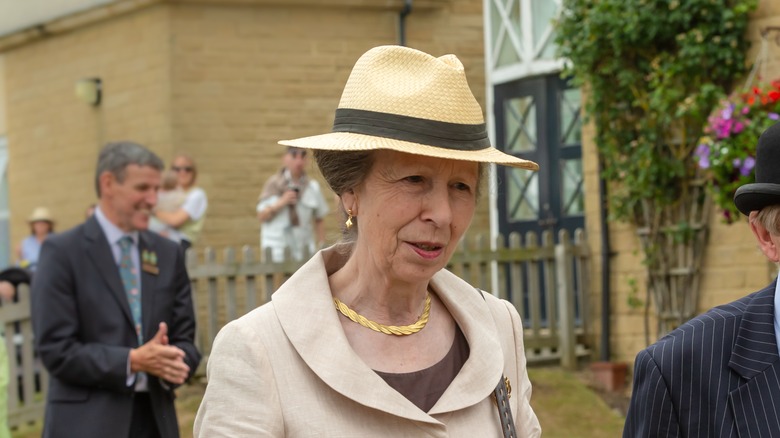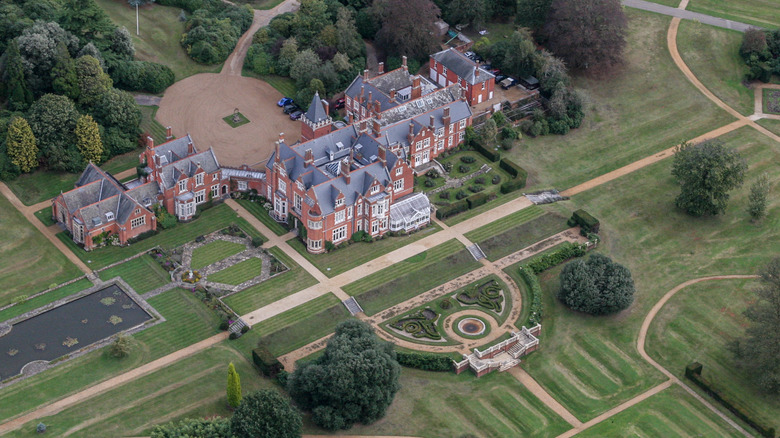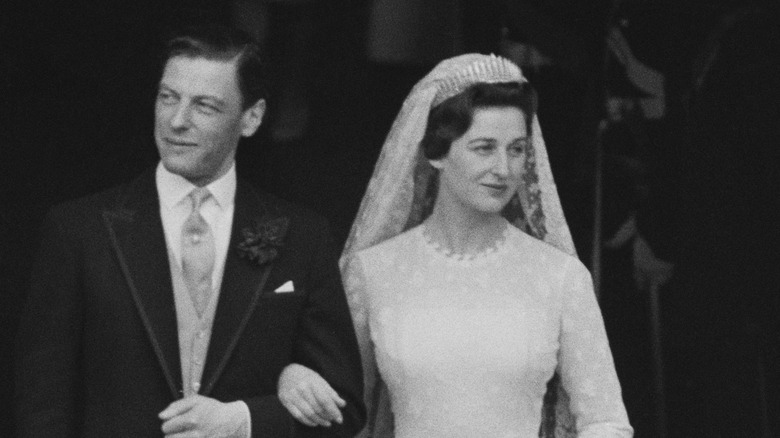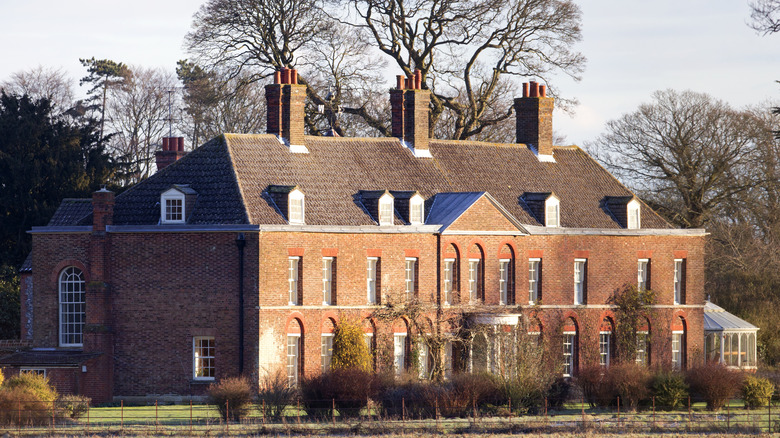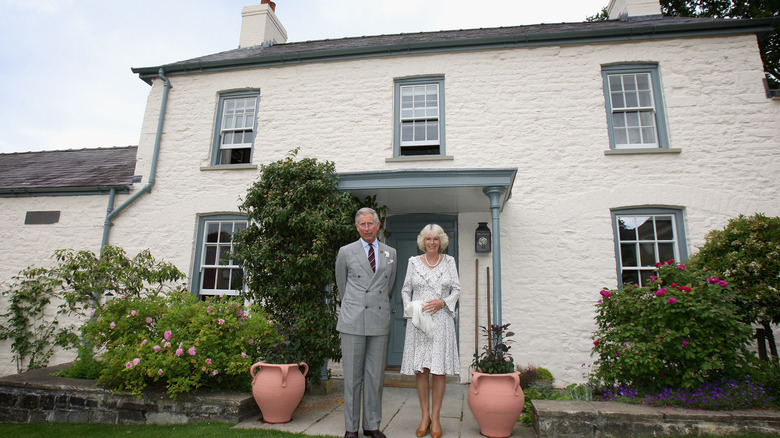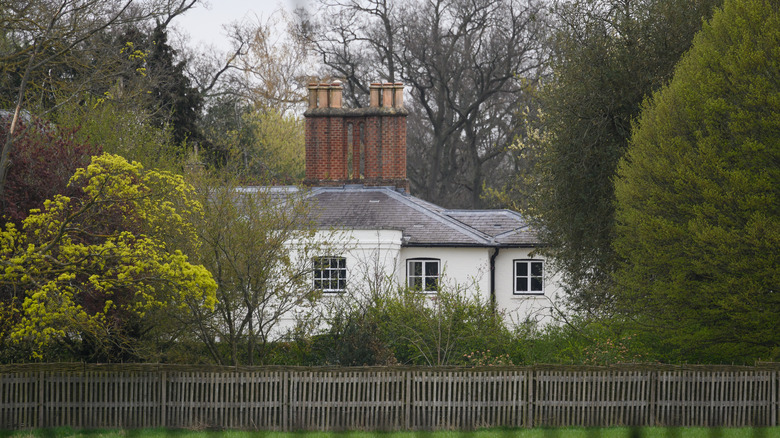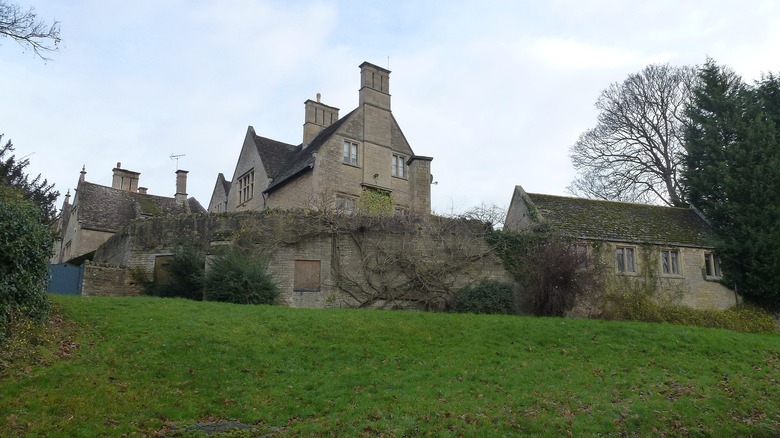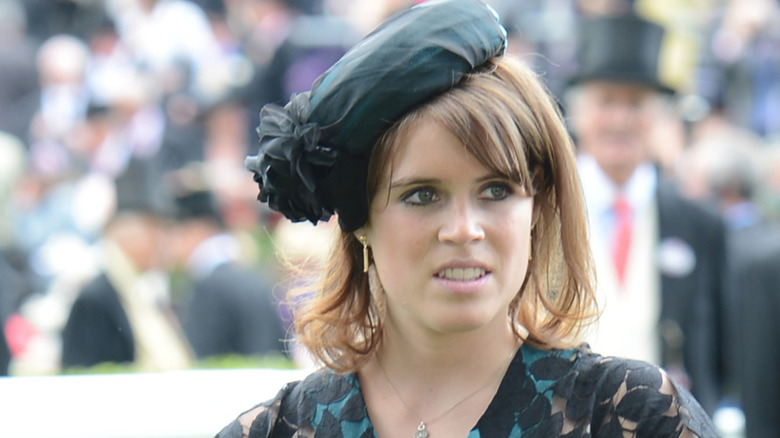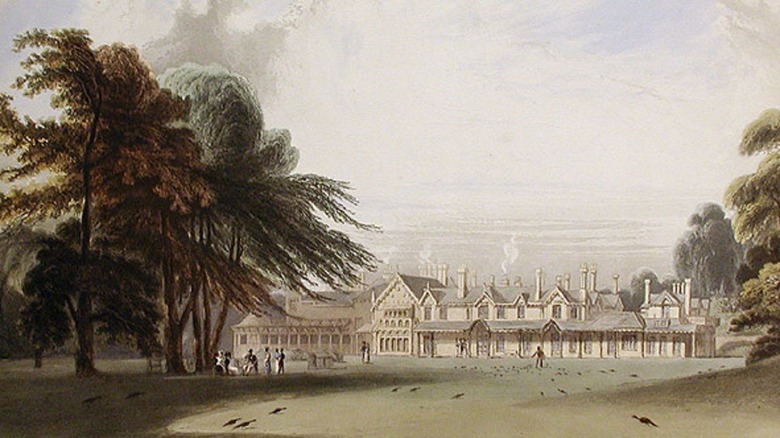British Royal Residences You've Never Heard Of Before
British royalty live like ... well, royalty, but not always in palaces. Almost all non-paparazzi have heard of Buckingham Palace (as detailed by the Royal Collection Trust), Windsor Castle, Sandringham, and Kensington Palace. However, you may be surprised to learn that the monarchy also has a number of other posh residences. There are, according to the official royal.uk website, a whopping 22 royal residences throughout Great Britain and Northern Ireland.
Just because there are almost two dozen royal residences doesn't mean King Charles III owns this many properties outright. This confusion is explained by the Evening Standard, which states that there are those properties that are privately owned, and then there are those controlled by the Crown Estate. Crown Estate property is technically owned by the reigning king or queen of the United Kingdom only while they are reigning. They cannot sell it or will it, though they can lease it for free to others as "grace and favor" residences.
Many royals who live in Crown residences lease the home from the Crown. As for the monarch, he or she receives 25 percent of the revenue to assist with their official duties and maintain the various premises. Let's now take a look at some of the lesser-known royal residences. Even though they are not as well known as the larger sites, they are almost royal mysteries, hardly seen by the public and photographed.
Craigowan Lodge
The famous Balmoral Castle in Scotland is said to have been the late Queen Elizabeth II's favorite residence. According to Town & Country, the 50,000-acre estate hosts some 150 buildings, and one of these buildings is Craigowan lodge.
According to the news outfit Express, Craigowan Lodge, a stone cottage, was used frequently by then-Prince Charles and the late Princess Diana in the early years of their marriage. Later, it became a favorite spot for Queen Elizabeth II, who would first stay at Craigowan while Balmoral Castle's tourist season ended. Aside from the late Queen, MyLondon reports that Craigowan is mainly used to house important royal guests. There's ample room, too, since a cottage, in this royal context, means having seven bedrooms.
Craigowan Lodge is private, being that it was bought directly by Queen Victoria's husband, Prince Albert, in 1852. Since Craigowan Lodge is private, it provides a quiet haven for royals awaiting the end of the tourist season.
Fort Belvedere
In Windsor Great Park, near the vast Windsor castle, there is a royal residence that looks more like a fusilier outpost than a center of royal opulence. Yet Fort Belvedere has a regal history tied closely with the fortunes of the Crown.
According to "Follies of Surrey," Fort Belvedere is a folly, meaning a faux fort (per Britannica), and boasts a distinctive triangular tower. First erected in 1750 for the Duke of Cumberland by Henry Flitcroft, it was originally called Shrubs Hill Tower. According to the "Historical Dictionary of the British Monarchy," Fort Belvedere was first used as a summer home. Later, in 1828, it was renovated into a hunting lodge for King George IV, and it was then that it took the distinct fort shape it has today. Indeed, 31 cannons were even installed.
This idiosyncratic dwelling appealed so much to King Edward VIII, that he considered it one of his most favored residences. In his autobiography "A King's Story: The Memoirs of the Duke of Windsor," the former king of England relates how it was given to him by his father, George V, in 1929, while he was Prince of Wales. Edward spent a great deal of time modernizing the interior, recalling how this period included "some of the happiest days of my life." It was also at Fort Belvedere where he abdicated as king in 1936, over his relationship with the divorcee Wallis Simpson. Today, Fort Belvedere remains Crown property, according to Historic England, and is tightly fenced in.
Highgrove House
Located in the Gloucestershire countryside, Highgrove House is an idyllic, garden-filled, nine-bedroom, and six-bathroom mansion that serves as the family residence for King Charles III and the Queen consort, Camilla. House & Garden details how Prince Charles first acquired the property in 1980 for him and his soon-to-be first wife, Princess Diana.
The home itself was designed in the late 18th century by Anthony Keck for a family that received a baronetcy. Prior to Charles III, the most prominent occupant of the home was Harold MacMillan, who had been prime minister from 1957 to 1963. Charles has put much work into the most recent iteration of Highgrove. Sustainability was a focus with the addition of solar panels and natural sewage systems. In addition to these modern upgrades, Charles maintained the traditional look of the house by adding a pediment, balustrade, and pilasters. One curious addition is described by Country Living which details how the house, for all its charm, also possesses a 20-foot by 20-foot steel encased "iron room" to protect the King and his family in the event of a terrorist attack.
Charles seems to have been quite taken by Highgrove House. He had an organic farm installed on the grounds and has remained attached to the place for most of his adult life. Not only did he raise his two children, princes William and Harry, at Highgrove House, but decades later retreated to it to prepare for the funeral of his mother, Elizabeth II.
Tamarisk House
Just southwest of Cornwall, the Isles of Scilly are a pleasant retreat, being blessed with a mild climate, according to Britannica. As a result, they have been a place where royalty have visited without having even to leave the United Kingdom, since it is under the jurisdiction of Cornwall.
One royal property of note is on the island of St Mary's, near Hugh Town, called Tamarisk House. According to "Tamarisk, St Mary's, Isles of Scilly Heritage Impact Statement," Tamarisk is one of the more modest of royal residences, being a four-bedroom dormer bungalow that was built in 1969. Reader's Digest relates how it was Charles III's official residence while he was Prince of Wales and still married to Princess Diana. However, it is related by Herald Weekly that they more often stayed with friends on the island of Tresco. Though it is private, tamarisk shrubs mask the property, thus giving it its name.
Today, the Tamarisk House can be rented for vacationers from the Duchy of Cornwall who may enjoy the short walk to St Mary's picturesque harbor. Curiously, there is no mention on the house's rental site of its royal connection.
Gatcombe Park
Gatcombe Park is the country house and primary residence of Anne, the Princess Royal. The only daughter of Elizabeth II, Home and Gardens reports that she and her first husband, Captain Mark Phillips, were given the 700-acre estate from her mother in 1976. It was valued at between $500,000 and $750,000 at the time.
While the Princess Royal also spends copious amounts of time at the magnificent St. James Palace, this is primarily for her work and duties. Gatcombe Park is home. Quite a home it is, too: The main mansion features nine bedrooms. Historic England's listing tells us that the two-story home was built in the 1770s of ashlar limestone and surrounded by gardens. The Princess regularly holds equestrian events on the grounds, such as the annual Festival of British Eventing. This acreage also possesses a working farm, including horses and cattle.
Regrettably for the public, Gatcombe Park is a private residence, so the average citizen can only imagine the interior beauty of this royal home. Still, the festival offers a chance to catch a decent glimpse of it — from the outside.
Bagshot Park
Prince Edward is Queen Elizabeth's youngest son, and while he is not destined to be King, he nevertheless lives like one at Bagshot Park, an estate that lays just 11 miles from Windsor Castle on a 51-acre parcel of land, per the Evening Standard. Few nonroyals have seen the inside of the main building, but the tabloid Hello! states that Bagshot Park's residence may contain as many as 120 rooms. Hello! also reported that on the rare instances media outlets got inside, they saw sun-drenched and stately rooms.
The original building was constructed for King Charles I in 1609. However, in 1879 Prince Arthur, one of Queen Victoria's sons, demolished and rebuilt it to its current grandeur. The current resident, Prince Edward, moved into Bagshot Park's residence in 1999, after his marriage to the Countess of Wessex. Certainly, the prince must have taken a liking to it: He recently lengthened the lease on the property for another century and a half.
Thatched House Lodge
Thatched House Lodge is the home to Princess Alexandra, the first cousin of the late Queen Elizabeth II. Originally constructed in 1673, the home, according to news site Express, contains six bedrooms, six reception rooms, and four acres of grounds.
Princess Alexandra began her tenure in this old and stately home in 1963 after her marriage to Sir Angus Ogilvy. Unfortunately, the house suffered a robbery that same year, with thieves taking more than £6,000 and a selection of the couple's wedding gifts. Aside from the Princess, the most famous resident was Robert Walpole, who is considered the first British prime minister, although he rejected the title, per Britannica.
The Princess today enjoys Thatched House Lodge's charm in private, as well as its nearby two-room summer house, with few of the general public having gotten a glimpse of the inside of this royal residence. Unlike many other royal properties, Ogilvy purchased the property outright, and all improvements were paid for by them. As a result, Thatched House Lodge may be directly passed down to their descendants.
Anmer Hall
Located on the Sandringham estate, Anmer Hall is one of the residences of Prince William and Kate Middleton. Town & Country tells us that the home was first constructed in 1802. While no palace, Anmer Hall is nothing to sneeze at either: The residence boasts ten bedrooms, a tennis court, and a swimming pool.
The property has been passed around between royals and their associates for generations. William and Kate moved in after they were married and spent a substantial amount of money to refurbish the place. The grounds were redone, as well as the interior, for about $2 million, which included building a new glass-enclosed garden room. One of the main changes is that the kitchen has become the central locus of the house.
Anmer Hall was a refuge for the royal couple, who hunkered down at the estate during the height of the COVID-19 pandemic in 2020. Many a video call from them had the backdrop of some inner room of Anmer Hall.
Llwynywermod
This impressively-named residence is the official Welsh home of the Prince of Wales. "The Little Book of Welsh Landmarks" tells us that this 200-acre estate, near the town of Myddfai in Llandovery, first came into royal prominence as the home of William Williams, a relative of Henry VIII's ill-fated second wife, Anne Boelyn. Llwynywermod was owned by baronets throughout the 18th and 19th centuries.
After decades of disrepair, in the 2000's King Charles III, while Prince of Wales, began a substantial renovation effort of the premises, employing the architect Craig Hamilton. As described by House & Garden, the result was three cottages, a threshing barn, and a main house for the Prince. What is most remarkable about Llwynywermod is that in its redesign, it has become a model of green sustainability. Materials that were used in the construction were reused or acquired locally, as well as an environmentally sensitive wood chip heating system. As for the interior, designer Annabel Elliot created an airy, elegant home primarily through the use of Welsh furniture and other designed items.
Frogmore Cottage
Located on the grounds of the Windsor Estate, Frogmore Cottage has been a retreat for royals for centuries ranging from Queen Charlotte, Queen Victoria's mother, and King George V when he was still a prince, as described by House and Garden. Construction began on Frogmore in 1680 on land that Henry VIII had acquired near the Thames, according to The Week, a marshy location filled with frogs — hence the name.
The current residence, House and Garden also revealed, was built in the early 19th century for Queen Charlotte and her daughters. At one point, during an interim between direct royal occupation, it was used to house Windsor staff. But by the time of the early 21st century, the residence had fallen into disrepair.
In 2018, Prince Harry and Meghan Markle were given the property by Queen Elizabeth II, and they moved there the next year after a £2.4 million renovation of the residence. It was transformed from a sprawling ten bedrooms to just five, but the couple added two orangeries and a yoga studio. Hello! revealed that the materials used for the interior design were vegan and organic. In fact, most of the house's structure was altered, resulting in the couple arranging to pay back the outlay to the public purse in installments.
Barnwell Manor
Located in Northamptonshire, Barnwell Manor has been a royal residence since 1938, when Prince Henry, the Duke of Gloucester, purchased it. "The Rough Guide to the Royals" tells us that his son, Prince Richard, inherited the property and its 2,500 acres of grounds. According to The Independent, it contains seven bedrooms, 40 reception rooms, and an ample six bathrooms for all necessities.
However, maintaining such a property was an onerous expense. In 1995, the prince decided the financial burden was too much and moved with the family to an apartment in Kensington Palace. Meanwhile, he started to rent the property, first to an antiques business. Then in 2011, he proposed a scheme to rent some of the grounds to host wind turbines, all as a money-making effort. Prince Richard's handling of the property has subsequently been roundly criticized by the press and public. Barnwell Manor is currently being rented out to Windsor House Antiques and is used as a presentation space for items by appointment only.
Ivy Cottage
Located on the grounds of Kensington Palace, Ivy Cottage is more cottage-like than the other royal cottages. This is because it has only a mere three bedrooms. Not much is known about the interior of Ivy Cottage since, as Woman and Home explains, it is a private residence. However, it is believed that it had been highly renovated by Princess Eugenie before her move there with her future husband, Jack Brooksbank. The nature of those renovations is unknown, but Eugenie, who is the daughter of Prince Andrew and Sarah Ferguson, is the director at Hauser & Wirth, an art gallery. Thus, it is assumed that interior work was inspired by this background.
Ivy Cottage is located among other similar two-story residences. Interestingly, according to the Evening Standard, this residential complex was almost exclusively used as housing for palace servants. Now they are all used for a medley of royals: While a royal block party in the neighborhood may stretch the imagination, it is by no means impossible.
The Royal Lodge
On the Windsor Estate, the grounds that hold the Royal Lodge have had some sort of royal residency since the 19th century. According to "I Never Knew That About Royal Britain," it first became a royal residence in 1815, after extensive work turned the existing house into an elaborate cottage.
This original construction was mainly demolished in 1830, and the current iteration of the residence grew from there. George VI and his wife, Queen Elizabeth (mother of the late Queen Elizabeth II), extended the property in 1931. The result was a 30-room mansion, of which seven were bedrooms. The Royal Lodge remained the home of the Queen Mother until her death in 2002, at age 101.
Royal Lodge passed to Prince Andrew, Queen Elizabeth II's second son, in 2004. Curiously, Prince Andrew's former wife, Sarah Ferguson, also lives in the residence, according to Woman & Home. The couple had an uncontentious divorce, but there is plenty of space in the residence for the two of them. The Royal Lodge is a grace and favor property, rarely seen by the public: Under the current terms, Prince Andrew lives on a 75-year lease for which he secured with £7.5 million toward renovations, and a £1 million payment to the Crown Estate.
